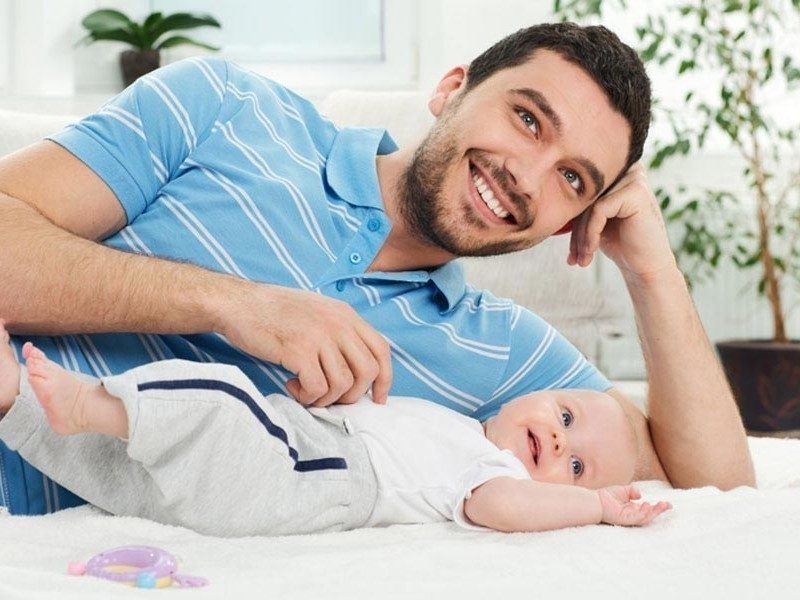Early neglect of the dad and changes to the father role
Prior to the 1960s, whenever families participated in research, heterosexual families and mothers were focused on. Dads took a backseat. It was the mother who carried the child through pregnancy. It was the mother who nurtured and raised the child. The mother was also instrumental in transforming the young child into a well-adjusted and successful young adult person. So it made sense to investigate the mother.
The father’s role was mostly peripheral to the child’s development supposedly. The father had to go out and earn a living, and be able to provide financially for their family. Fathers had less impact on the psychological and emotional development of their children, so the theory went.
But the challenges to traditional gender roles during World War Two led to the entry of many women into the workforce. This and the women’s rights movement helped women to remain in employment and led to progress in women’s rights. With these changes, women gradually gained more power, both socially and economically.
These social changes had a knock-on effect with regards to the role of fathers. It changed the role of mothers at home and also allowed the role of fathers to begin to change. These changes helped pave the way for the development of new forms of fatherhood.
The voice of gay dads within the gay liberation movement
Then came the gay liberation movement between the late 1960s and early 1970s. This helped empower many gay and bisexual men, and women. This movement helped men to look beyond a life of stigma and marginalization.
Gay liberation also helped create new possibilities and visions of family. It provided the vehicle to begin to campaign for domestic partnerships between men. It challenged the belief that gay men were second-class citizens and therefore would not be entitled to many rights assigned to straight men, including parenthood. The growth of gay rights allowed people to vision what it would be like for gay dads to raise children.
Reproductive technologies and gay dads
Alongside these advances, substantial progress was being made with reproductive technologies. The first “test-tube” baby was born through in vitro fertilization (IVF) in July 1978. This was possible due to the pioneering work of Professor Robert Edwards, emeritus professor of human reproduction at Cambridge University (UK), and his colleague Dr Patrick Steptoe.
Two years before this, the first altruistic surrogacy arrangement was instituted in Dearborn, Michigan (US). Then, in the 1990s, Britain’s first gay surrogate couple had their first child by traveling to the US. These advances in reproductive technologies were instrumental in facilitating surrogacy for gay dads.
Growing normality of being gay
All of these advances were taking place alongside similar progress in research regarding the normality of being gay. New theories proposed that being homosexual was normal. These theories were being published in journals and were beginning to be discussed within wider society.
Blended families
This increased normality allowed men who had married women (often due societal pressures) and who were also sleeping with men (or wanting to), to leave their spouses. A portion of these men had children, and when they left they effectively created the possibility of raising their child with another man. Even though many of the men did not disclose their sexuality to their child until they were adults, they effectively became gay dads who helped pioneer the path to fatherhood for many men who were in relationships with men, and also single gay and bisexual men.
Non-gender based rulings and the role of the father
Also, from as early as the late 1960s, the US Supreme Court began to change laws based on a child’s legal status based on marital relationships. The law began to view parentage based on the parent-child relationship, rather than the marital status of the parents. This change acknowledged the important relationship that a gay dad or a bisexual dad can have with his child. This was to impact on the rights of gay dads to adopt. Legal changes like these were also starting to happen in the law courts in other countries around the world.
Also, civil partnership acts around the world that allowed for same-sex parents to be recognized began to take place from the late 80s. The first civil partnership act was passed in Denmark in 1989. At least 21 countries around the world have now legally recognized same-sex parents.
What next?
Thanks to the women’s rights movement, gay liberation, reproductive technology and legal advances, gay dads are increasing in number. The rights of gay dads continue to increase, and their important contribution to the lives of children all around is finally being recognized as valuable.
References
Armesto JC. Developmental and Contextual Factors that Influence Gay Fathers’ Parental Competence: A Review of the Literature. Psychology of Men & Masculinity 2002;3(2):67-78.
Hawkins J. My Two Dads: Challenging Gender Stereotypes in Applying California’s Recent Supreme Court Cases to Gay Couples. Family Law Quarterly 2007;41(3):623-638.
In the video below, released by the Associated Press, Eric Stonestreet and Jesse Tyler Ferguson from the ABC hit “Modern Family” talk about playing gay dads with an adopted daughter on network TV.


